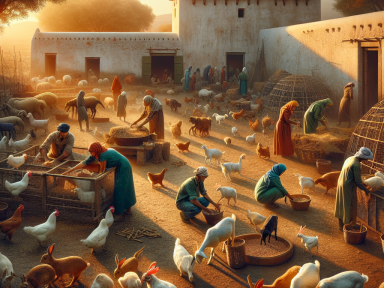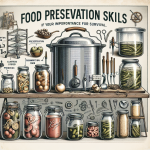Why Raising Livestock is Vital
With the way the world is shifting, the importance of self-reliance cannot be overstated. Dependence on systems that are increasingly becoming unreliable is a risk you cannot afford to take. Famine, diseases or mass system failures are imminent threats that send chills down our spines. It is wise to take matters into your hands and ensure your survival and that of your loved ones by raising your livestock.
Benefits of Raising Your Own Livestock
Raising your own livestock has invaluable benefits. Not only do you ensure food security for yourself and your family, but you also have control over the nutritional value of the food you consume. You can raise your livestock organically, free from harmful antibiotics and growth hormones, giving you a healthy diet, which is a luxury nowadays. Additionally, livestock provides high-quality manure, cutting your costs on synthetic fertilizers.
Selecting the Right Livestock
Initiating your livestock journey can lead to a flurry of questions. The most common one being, “What livestock should I start with?“. Let’s break it down:
- Chickens: They are an excellent starting point for beginners due to their relatively small size, manageable care requirements, and the quick return on investment, where you’re rewarded with fresh eggs and meat.
- Rabbits: These small mammals are a perfect addition to any homestead due to their minimal space requirements. They reproduce rapidly, ensuring a constant supply of meat.
- Goats: If you have a little more space, goats can be a great source of dairy products, meat and hide. They are hardy and can feed on shrubs and weeds, reducing your feeding costs.
Raising Livestock
The key components of raising livestock successfully are:
- Feeding: Ensure a constant supply of balanced diet. Remember, the health of your livestock directly impacts the quality of meat or dairy products.
- Sheltering: Ensure the animals are protected from harsh weather elements.
- Healthcare: Regular check-ups by a veterinary officer are necessary. Additionally, familiarize yourself with common animal diseases and their management.
Adapting to Challenges
Becoming self-reliant through livestock raising is not without its challenges like extreme weather conditions, disease outbreaks, or pest infestations. But, the key is to embrace these challenges as stepping stones towards establishing a full-proof survival plan. Remember, independence doesn’t come easy. It calls for resilience, continuous learning, and adapting risk management strategies.
Moving Beyond Fear
It’s natural to feel intimidated by the vulnerability of our lifestyle. The fear of being unable to shield your loved ones from the clutches of adversity. However, consider this fear as a driving force. Use it to propel you towards embarking on this journey of self-reliance. Raising livestock for survival is not just an activity; it’s a way of securing your future.




GIPHY App Key not set. Please check settings